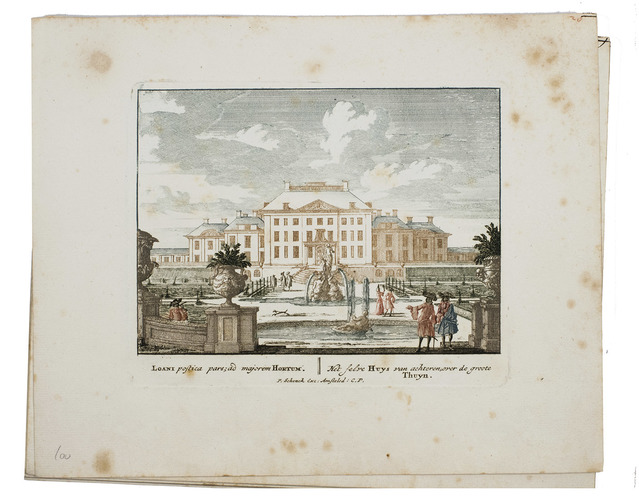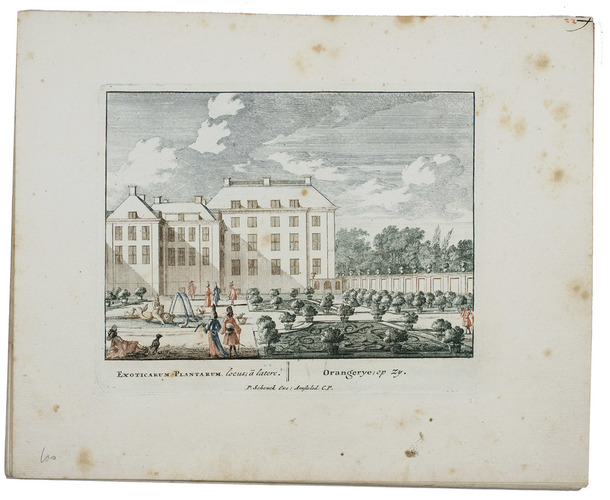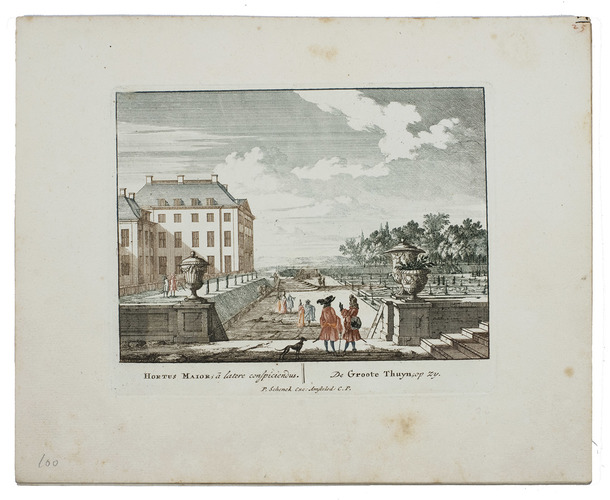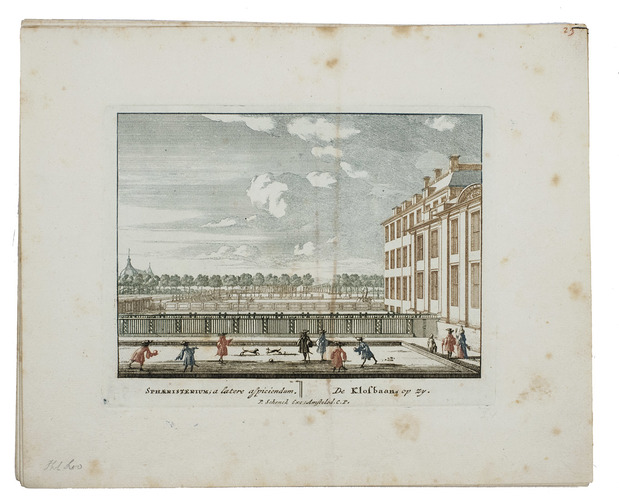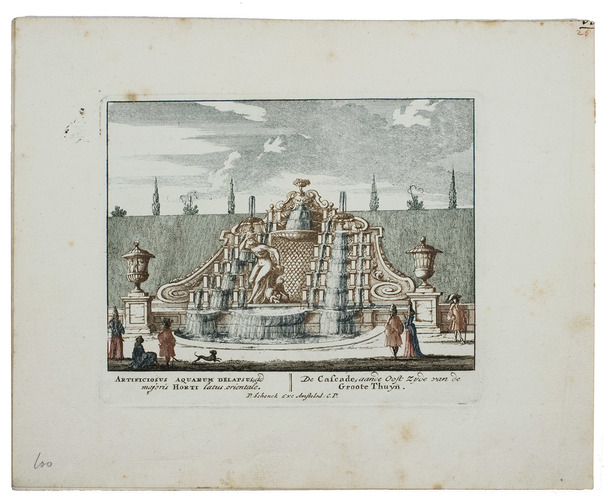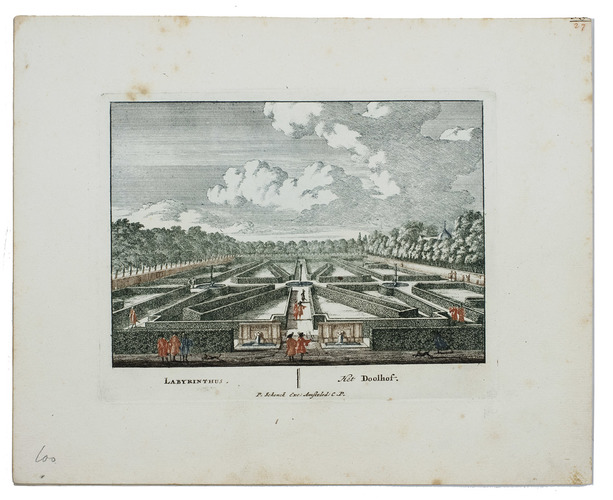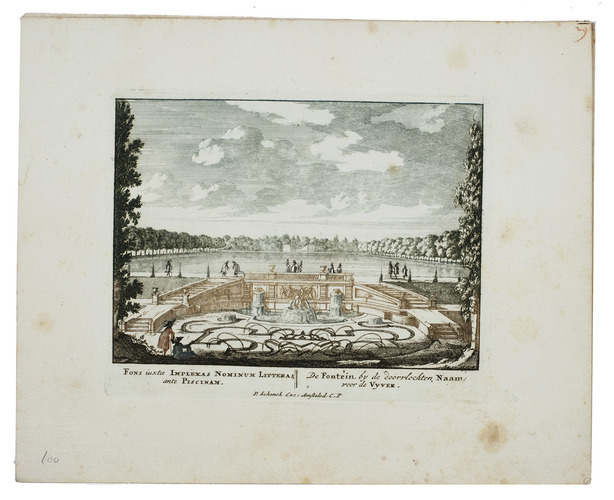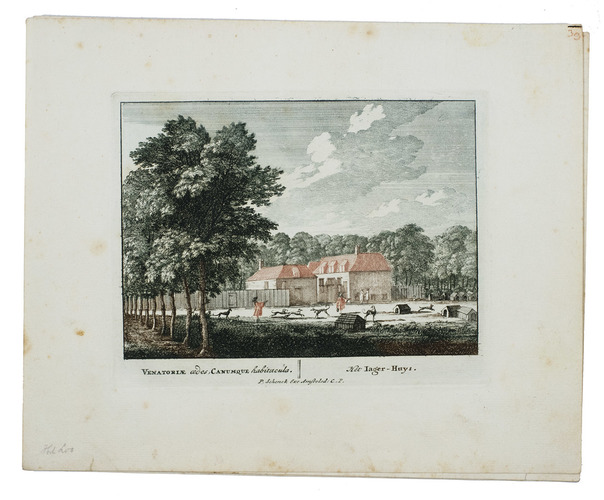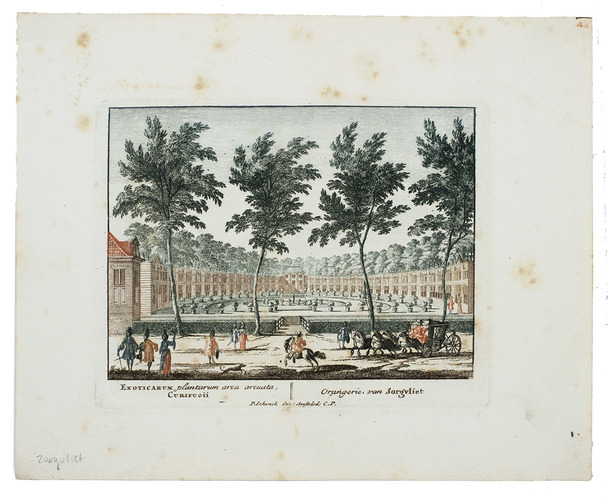CALL, Jan van; Petrus SCHENCK.
[A series of 15 magnificent color-printed plates of the most impressive Dutch palaces of the Stadtholders: Het Loo (Apeldoorn), Huis ten Bosch (The Hague), Honselaarsdijk (near Naaltwijk) and Sorgvliet (The Hague).]
Amsterdam, Petrus Schenck, ca. 1695. 4to (20 x 24.5 cm). 15 (from a series of 25) colour-printed plates (plate size ca. 13 x 17 cm). Loose leaves.
€ 6,500
Magnificent and rare colour-printed print series, the second part of the Admirandorum quadruplex spectaculum, published by Schenk ca. 1695.
The prints are the result of an early experiment with multi-colour printing using a technique patented by Jan Teyler in Nijmegen, though it had already been used on rare occasions. With this so called "à la poupée" technique, each printing plate is inked in different colours (dabbed onto the plate with a cloth pad or ball) and then printed in multiple colours in a single print run. Since the colours had to be inked again after each run (like a monotype, but using an engraved or etched image), each print is unique, varying slightly in the composition of the colours. The result was a "printed painting" with deep purples, vivid oranges, cool turquoise blues and lush greens, with up to eight colours per impression to enhance perspective in landscapes, represent the volume of objects and record natural colours of birds, flowers and human figures.
Colour printing remained rare far into the 19th century, but at the end of the 17th century, several people experimented with various techniques, especially in the Netherlands. In 1688 Johan Teyler (1649-1709), a Dutch painter, engraver and mathematician at Nijmegen, was granted a patent for a colour printing process in a novel manner that involved using different colours of ink at the same time when printing engravings or etchings. Pieter Schenk and Jan van Call knew Teyler from the time they lived also in Nijmegen, where Jan van Call studied mathematics with Teyler, and both Van Call and Teyler were members of the Bentvueghel club of artists in Rome.
Some marginal staining, but generally in good condition. Magnificent colour-printed plates of Dutch palaces. Hollstein 25 (1981), 181; 1440-60. Cf. Van Beers et al., Johannes Teyler: Nederlandse kleurendruk rond 1700; Van Delft, "Admirandorum quadruplex spectaculum", in: Stijl; Van Eeghen, "Petrus Schenk en zijn Afbeeldinge der voornaamste gebouwen van Amsterdam ", in: Amstelodamum, 66 (1974), pp. 117-136; New Hollstein D&F (Johannes Teyler and Dutch Colour Prints), comp. by Ad Stijnman, ed. by Simon Turner, (2017), part III, pp. 182-278; Stijnman, Engraving and etching 1400-2000, pp. 347-355; Stijnman, "Colour printing in intaglio before c. 1700", in: Stijnman & Savage, eds., Printing colour 1400-1700, pp. 43-46; Turner, "Opus typo-chromaticum: the colour prints of Johannes Teyler", in: Stijnman & Savage, eds., Printing colour 1400-1700, pp. 196-206.
Related Subjects:









